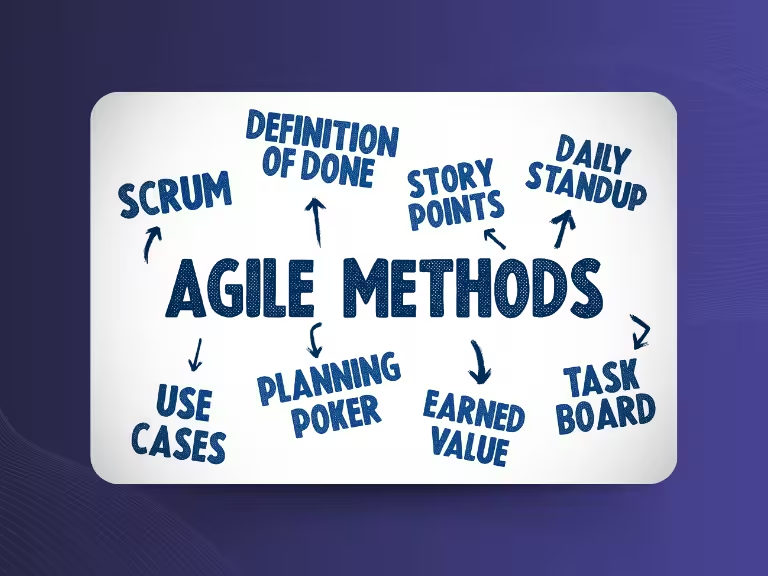Artificial intelligence is revolutionizing the world around us, and e-commerce is no exception. If you're in the online retail space, AI is bound to become part of your daily business sooner or later. But how exactly can you use AI in e-commerce? In this article, we break down five real-world applications of AI that are already driving success for online retailers.
.avif)
What Can AI Really Do in E-Commerce?
At its core, AI relies on algorithms that process input data to identify patterns and make predictions. That means AI excels at data analysis and automating repetitive tasks, freeing up humans for higher-value work.
Here’s how this benefits e-commerce:
- Automated processes lead to higher efficiency
- Lower costs thanks to reduced staffing needs
- Increased sales and revenue through personalization
- Deeper insights from big data analytics
Sounds too good to be true? Keep reading, we’re about to show you exactly how AI is being used in online retail today.
5 Practical AI Applications in E-Commerce
1. Personalized Product Recommendations
One of AI’s strongest assets is its ability to deliver highly personalized product suggestions. By analyzing a customer’s previous behavior - purchases, reviews, search history, and more - AI can recommend exactly the right products at the right time.
This not only creates a more personal shopping experience but also boosts conversion rates and customer loyalty. Amazon is a well-known example, using vast data sets to make pinpoint-accurate suggestions.
Top AI tools for personalized recommendations:
- Dynamic Yield – Tailors product suggestions based on customer behavior
- Algolia Recommend – AI-driven engine for smart product recommendations
- Clerk.io – Real-time AI recommendations across your shop
2. AI for Product Descriptions and SEO
Nobody wants to buy a boring product, and bland product descriptions won’t help your sales. AI can help you craft compelling, emotion-driven copy. Just remember to add a human touch to keep it authentic.
AI can also support your SEO efforts by analyzing trending keywords and optimizing content so your products are more discoverable on search engines.
Top AI tools for product content and SEO:
- ChatGPT / OpenAI API – Generates engaging product descriptions and SEO copy
- Jasper AI – Automates content creation with SEO-friendly structure
- Surfer SEO – Analyzes and boosts Google rankings through optimized content
3. Smarter Inventory and Warehouse Management
Inefficient inventory management can quickly drain profits. AI can help forecast product demand based on historical data, seasonality, and trends. This minimizes both overstock and out-of-stock scenarios.
Take Zara, for example, they use AI to monitor and adjust inventory in real time. Drones and warehouse robots are also powered by AI to streamline logistics and reduce human error.
Top AI tools for inventory management:
- Blue Yonder – Advanced inventory forecasting and demand prediction
- Luminate by JDA – Real-time inventory optimization for smarter decisions
- Symphony RetailAI – Manages stock and demand through predictive analytics
.avif)
4. Dynamic Pricing Optimization
E-commerce is a highly competitive landscape, and prices can make or break your success. AI tools enable dynamic pricing, adjusting product prices in real time based on demand, competitor pricing, market trends, and even social media buzz.
With AI, you can react instantly to changes and stay ahead of competitors.
Top AI tools for pricing optimization:
- Prisync – Tracks competitors and adjusts your prices automatically
- Repricer.com – Tailored for Amazon sellers to automate pricing
- Omnia Retail – Combines price optimization with in-depth market analysis
5. Transcribing Meetings Automatically
Meetings, whether with teams or clients, are a part of daily life in e-commerce. But note-taking can be time-consuming. AI transcription tools convert spoken content into written transcripts, saving you time and keeping everyone aligned.
Just make sure to choose a GDPR-compliant tool if you operate in Europe.
Recommended AI tool:
- Sally AI – Our own transcription tool (yes, we're biased—but it works!)For a broader comparison, check out this transcription software guide.
Getting Started with AI in E-Commerce: Key Steps
AI brings incredible advantages, but implementation can be overwhelming. Many retailers hesitate because of the wide array of tools and options.
.avif)
While a full guide is beyond this article’s scope, here are six crucial steps to help you get started:
- Define your goals – What do you want to achieve with AI?
- Secure quality data – AI is only as good as the data it learns from
- Choose the right tools – Match solutions to your specific needs
- Train your AI – Use historical data and continuously fine-tune
- Integrate into workflows – Make sure AI complements your current systems
- Test and optimize – Measure results and adjust as needed
Employee involvement is also key. When your team understands the benefits of AI, they’ll be more open to change. Remember, integrating AI is a marathon, not a sprint.
Final Thoughts: AI Is Already Part of E-Commerce
AI is no longer just a trend, it’s a reality in today’s e-commerce landscape. Big players are already using it with great success, and it’s only a matter of time before it becomes the norm across the industry.
So, where do you stand? If you’re just starting out, that’s perfectly fine. What matters is that you take action and begin exploring AI now. Doing so will give you a real edge over your competition.

Test Meeting Transcription now!
We'll help you set everything up - just contact us via the form.
Test NowOr: Arrange a Demo Appointment





